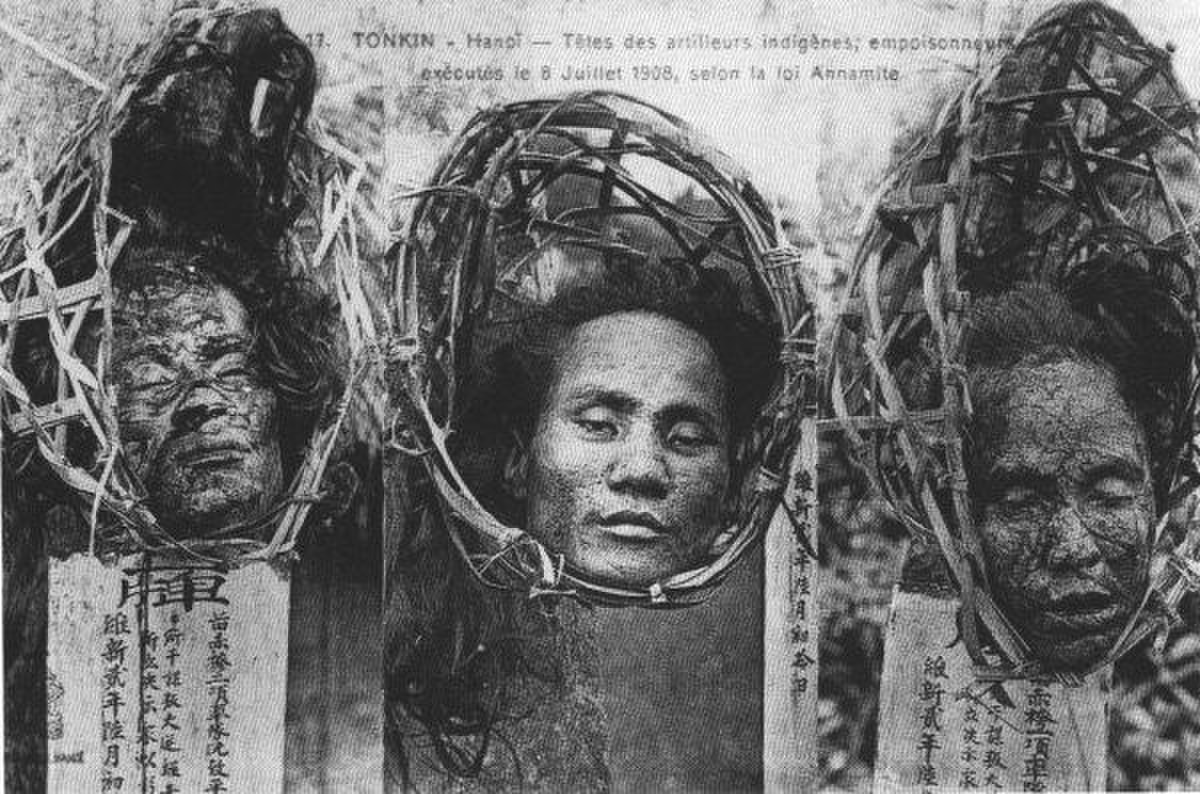
Resistance Movement
VietnamAfter Vietnam lost Gia Định, the island of Poulo Condor, and three southern provinces to France with the Treaty of Saigon between the Nguyễn dynasty and France in 1862, many resistance movements in the south refused to recognize the treaty and continued to fight the French, some led by former court officers, such as Trương Định, some by farmers and other rural people, such as Nguyễn Trung Trực, who sank the French gunship L'Esperance using guerilla tactics. In the north, most movements were led by former court officers, and fighters were from the rural population. Sentiment against the invasion ran deep in the countryside—well over 90 percent of the population—because the French seized and exported most of the rice, creating widespread malnutrition from the 1880s onward. And, an ancient tradition existed of repelling all invaders. These were two reasons that the vast majority opposed the French invasion.[191]
The French Invaders seized many farmlands and gave them to Frenchmen and collaborators, who were usually Catholics. By 1898, these seizures created a large class of poor people with little or no land, and a small class of wealthy landowners dependent on the French. In 1905, a Frenchman observed that “Traditional Annamite society, so well organized to satisfy the needs of the people has, in the final analysis, been destroyed by us.” This split in society lasted into the war in the 1960s.
There emerged two parallel movements of modernization. The first was the Đông Du ("Travel to the East") Movement started in 1905 by Phan Bội Châu. Châu's plan was to send Vietnamese students to Japan to learn modern skills, so that in the future they could lead a successful armed revolt against the French. With Prince Cường Để, he started two organizations in Japan: Duy Tân Hội and Việt Nam Công Hiến Hội. Due to French diplomatic pressure, Japan later deported Châu. Phan Châu Trinh, who favored a peaceful, non-violent struggle to gain independence, led a second movement, Duy Tân (Modernization), which stressed education for the masses, modernizing the country, fostering understanding and tolerance between the French and the Vietnamese, and peaceful transitions of power. The early part of the 20th century saw the growing in status of the Romanized Quốc Ngữ alphabet for the Vietnamese language. Vietnamese patriots realized the potential of Quốc Ngữ as a useful tool to quickly reduce illiteracy and to educate the masses. The traditional Chinese scripts or the Nôm script were seen as too cumbersome and too difficult to learn.
As the French suppressed both movements, and after witnessing revolutionaries in action in China and Russia, Vietnamese revolutionaries began to turn to more radical paths. Phan Bội Châu created the Việt Nam Quang Phục Hội in Guangzhou, planning armed resistance against the French. In 1925, French agents captured him in Shanghai and spirited him to Vietnam. Due to his popularity, Châu was spared from execution and placed under house arrest until his death in 1940. In 1927, the Việt Nam Quốc Dân Đảng (Vietnamese Nationalist Party), modeled after the Kuomintang in China, was founded, and the party launched the armed Yên Bái mutiny in 1930 in Tonkin which resulted in its chairman, Nguyễn Thái Học and many other leaders captured and executed by the guillotine.
